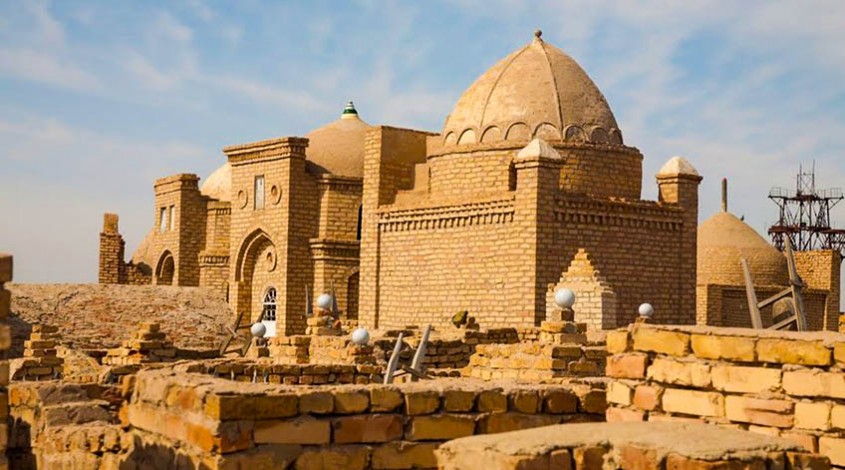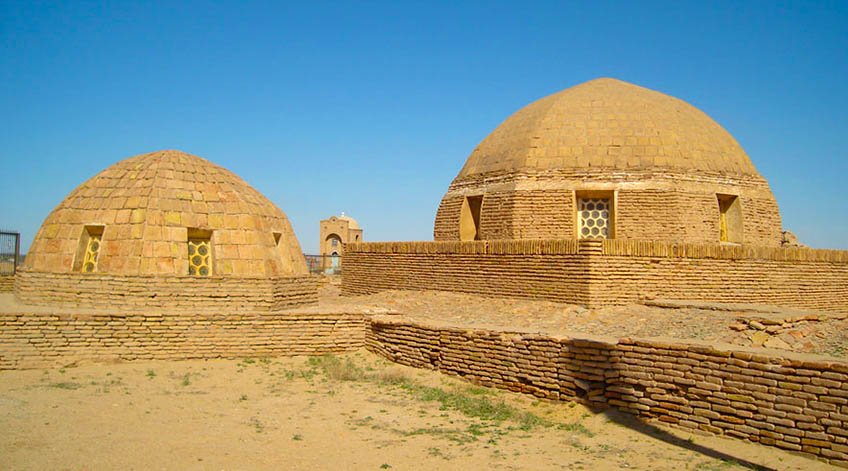

The architectural complex of Mizdakhan is located on an area from 100 to 200 hectares near the city of Khodjeyli in Karakalpakstan. The highway crossing between Karakalpakstan and Turkmenistan makes it quite comfortable for the tourists to visit it. The attraction of interest located on the three hills is seen from far away. It takes a lot of time to explore all its parts, but it is worth it.
The complex appeared more than 2,000 years ago and significantly increased during its existence. In or about 400-300 BC, there was a settlement here. The city grew, and so did the requirement for its fortification. The reconstruction was conducted approximately in the 9th century. During this period, Islam replaces the Zoroastrianism in the city. Instead of using ossuaries and types of burial sites typically used by the fire worshippers, burials according to Muslim traditions began.
One of the branches of the Great Silk Road passed through the city, which was the reason for the well-being of the city. However, in the 13th century, the army of Genghis Khan significantly damaged the city, due to which its residents left it. Having become desolated, the city slowly came down, but its location fitting for trade allowed it re-emerge.
In the 14th century, the fortress called Gyaur-Kala was rebuilt on the north side. The scientists consider it to be the first well-built construction with well-considered planning and defense part. The ten-meter-high walls approve the important strategic meaning of the city and the fact that interventions from the neighboring lands took place as well.


The fortress walls unambiguously show what was protected from the foes first of all – those were the palace and the temple. On the opposite side, there was a graveyard where the burials took place according to the Zoroastrian customs. That was where the ossuaries and the dakhma (the building on the flat roof of which the ritual of preparing the bodies to be buried) were found.
Many legends about Mizdakhan were created. The most famous one states that the body of Adam himself is buried here and the mausoleum is built above it. The building is in decay, and each year it contains less and less bricks. The legend states that this is the Apocalypse Clock, and each fallen brick makes the end of the world drawn nearer; when the last brick falls, the Apocalypse will come.


This legend led to another belief: if one builds a pyramid out of fallen bricks and wishes for something, the wish will come true. The main condition is that the pyramid should contain 7 bricks, like the number of days of creation in Islam. People believe that one day their prayers will be answered and they will be saved.
The brick patterns, colorful lining and elaborate ornaments can still be seen among the remains of the building, but mostly the buildings of that period turned into ruins. But on the west side of the necropolis there is a well-preserved Nazlimkhan-Sulu mausoleum. A flight of steps leads to it, and you can enter the small hall decorated with the painting, majolica and burnt brick patterns through the archway. There are several burial sites at the mausoleum. Perhaps the building was used as a madrasah for running studies, but after the burial sites appeared, its purpose changed.
Canaan Travel invites you to spend your vacation in Uzbekistan and encounter the marvelous history of the ancient East.
